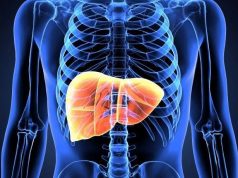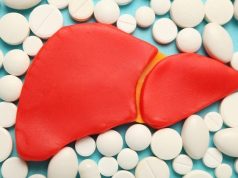Risk for NAFLD increased with long or irregular cycles in women younger than 40 years after adjustment for age, BMI, insulin resistance, other confounders
FRIDAY, March 4, 2022 (HealthDay News) — For young premenopausal women, long or irregular menstrual cycles are associated with an increased risk for both prevalent and incident nonalcoholic fatty liver disease (NAFLD), according to study published online March 3 in the Journal of Clinical Endocrinology & Metabolism.
In Young Cho, from the Sungkyunkwan University School of Medicine in Seoul, South Korea, and colleagues conducted a cross-sectional study involving 72,092 women younger than 40 years who underwent routine health examinations; a longitudinal analysis was conducted among 51,118 women without NAFLD at baseline. The association between menstrual cycle length and irregularity with the risk for NAFLD was examined, using 26- to 30-day cycles as the reference.
The researchers found that 27.7 percent of participants had long or irregular menstrual cycles at baseline and 7.1 percent had prevalent NAFLD. There was a positive association observed for long or irregular menstrual cycles with prevalent NAFLD. Incident NAFLD occurred in 8.9 percent of women during a median follow-up of 4.4 years. The multivariable-adjusted hazard ratio for NAFLD was 1.22 comparing long or irregular cycles with the reference group, after adjustment for age, body mass index, insulin resistance, and other confounding variables; in a time-dependent analysis, the association was strengthened, with a hazard ratio of 1.49.
“Our results indicate that long or irregular menstrual cycles may provide an easily identifiable marker for an increased risk of NAFLD in young, premenopausal women,” the authors write. “Screening for NAFLD and counseling to promote healthy lifestyle behaviors may benefit women with a history of long or irregular menstrual cycles.”
Abstract/Full Text (subscription or payment may be required)
Copyright © 2021 HealthDay. All rights reserved.








